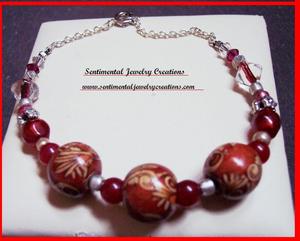As with any craft, leatherworking involves using a number of specialized tools. While it is possible to accomplish quite a bit crafting leather with basic knives and common tools, using leatherworking tools often makes your project faster and easier to complete and helps you attain more consistent and even results. For this reason, it is helpful to be familiar with at least some of the basic tools of the trade when planning a leatherworking project.
Swivel knives are one of the most common types of knife for use in leather tooling. A swivel knife consists of an angled blade like that of a utility knife, mounted on a pivot so that the user can easily turn the knife to make curved cuts in the leather.
Strap cutters are tools with a blade and an adjustable guide bar. Lining the guide bar up with the edge of a piece of leather and then pulling the blade across its surface enables you to quickly cut a very even strip of variable width.
Hole punchers do exactly what their name implies; they punch holes of varying shapes and sizes out of sheets of leather. The most commonly-seen hole punchers are rotary punches, which you operate by squeezing the handles much like with a paper punch, and which have an adjustable wheel on them that allows you to punch out differently-sized holes with just one tool. Awls are also frequently used to create holes in leather, especially when you do not want to actually remove any material in the process.
Embossing stamps transfer pre-made designs onto the surface of a piece of leather through pressure. Two main varieties exist; traditional stamps, which are positioned on the leather and struck with a mallet, and stamp rollers, which allow you to roll a wheel over the surface of the leather to press the stamp in along a long line.
Skivers are tools shaped similarly to cheese slicers, and used for a similar purpose. They shave off the topmost portion of the leather, helping to level out seams and other bumpy areas.
There is an extremely wide variety of edging tools available. They widen and shape the lines cut by a swivel knife or other blade, as well as being useful for shaping the outside edges of the leather. They usually have wooden handles with bulbous ends so as to allow them to be struck and more easily cut into the material. You need to use special leatherworking mallets, made of rawhide or other somewhat soft materials, on these tools in order to avoid damaging them.
Creasers and folders are tools with thin, but not bladed, edges, used to create even, consistent creases in the material without cutting it. They range from complex adjustable wooden-handled tools to simple smooth, narrow-edged sticks.
Leather needles are necessary for any sewing work on a leatherworking project. They come in a wide variety of shapes and sizes, but in general are larger, thicker and duller than standard sewing needles, which would quickly bend and dull from being repeatedly pushed through such tough material.
Pricking wheels are similar to embossing stamp wheels. Instead of embossing a decorative pattern on the leather, however, they push in a row of small, evenly-spaced shallow holes. Their main function is to create guides for even hole placement in stitching.




